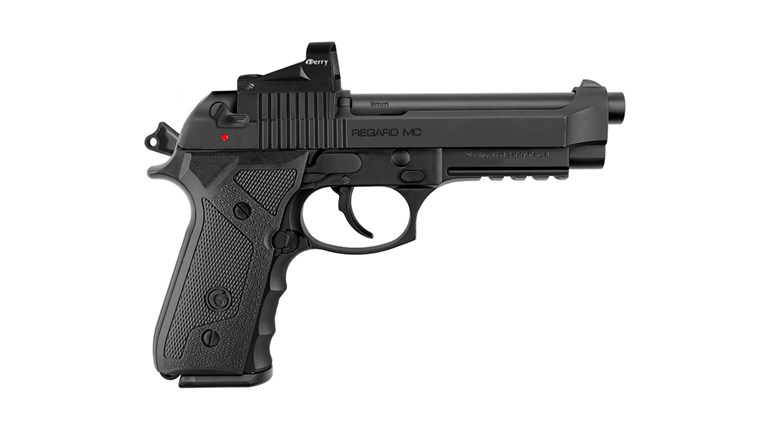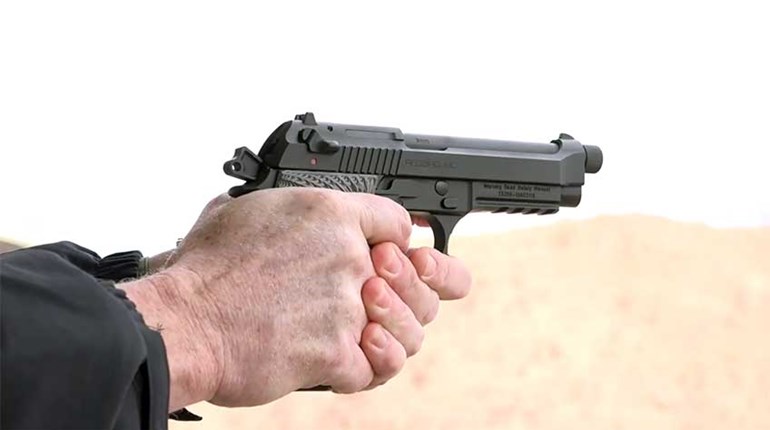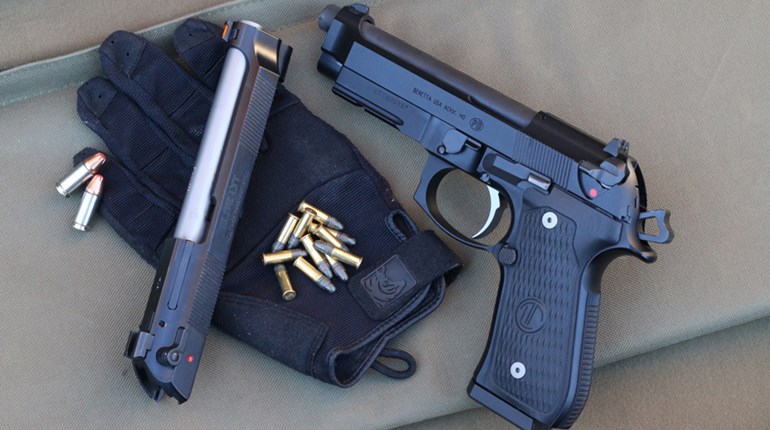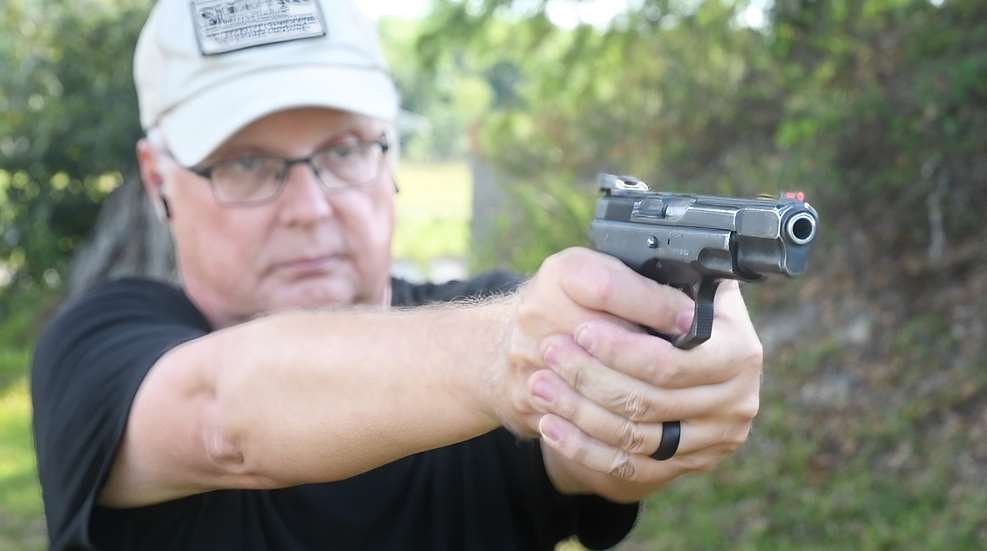
If you carried a pistol for duty or personal use before 1970, you most likely wielded a 1911 or any one of a variety of revolvers. While these handguns are reliable, powerful, and have certainly done their job, a new generation of sidearm was just around the corner when we entered the age of the “wonder nines.”
The true definition of the term “wonder nine” is a bit of an enigma. When researching the topic, a few things are certain. They all use staggered or double-stacked magazines which greatly increase their capacity. These guns also must be chambered in 9mm, hence the name. Finally, the term itself was coined by a gun writer named Robert Shimek. Such a wonderful innovation were these high capacity 9mm pistols, he deemed them “wonder nines.” After that, it gets a bit muddy. Some say only steel framed DA/SA double-stacked 9mm’s are true “wonder nines.” Others believe the polymer-framed striker fired guns of this era fall under the umbrella as well. For the purposes of this article, we will discuss both.
Whispers Of The Wonder Nine
There are 2 pistols that predate the “wonder nine” by several decades and share some of the qualities that would eventually combine to produce the high capacity wonders we have today.
The Walther P38 was designed in 1938 and entered service with the German military in 1939. The P38 was the first locked-breech DA/SA handgun. Its design pioneered the ability to chamber a round and use a de-cocker lever to place the weapon in double-action for a longer, “safer” initial trigger pull. This design aspect would carry on to become an integral part of the “wonder nine” class of handguns. The 8-round capacity, however, is what inhibits the P38 from being part of that class.
A huge leap forward in its own right, the Browning Hi Power similarly doesn’t make the cut. Although the Browning tilting-barrel recoil system would carry over, as well as the double-stack magazine, the Hi Power is single action only. The Hi Power was designed in 1914 and started being mass-produced in 1935. The “wonder nines” we will discuss were all manufactured post 1970.
Another honorable mention in this category of “almost a wonder nine,” is the Heckler & Koch VP70. The first production polymer-framed pistol was born. Gaston Glock’s design (Glock 17) wouldn’t make an appearance for another 12 years! The VP70 boasted an impressive 18-round magazine capacity and was even capable of firing fully automatic at around 2,200 rounds per minute. Unfortunately, the trigger was double action only with an extremely long and heavy pull. The awkward trigger shoe design, push-button safety, and overall poor ergonomics led to this pistol’s demise 19 years later. Extremely futuristic and forward-thinking, it served as somewhat of a proof of concept for Glocks forthcoming flagship.
The Big 3
Smith & Wesson Model 59
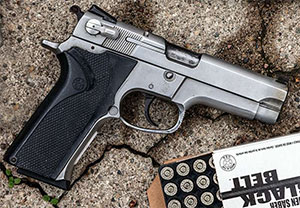
Arriving on the scene in 1971 was the Smith & Wesson Model 59. Although this initial model was DA only, it was the beginning of the rise of the “wonder nines.” The Model 59 was light due to its aluminum frame. It weighed in at only 27 ounces. It was also very compact for its 14-round capacity. The 59 was only 7.5 inches in overall length and utilized a 4-inch barrel. The combination of weight, size, capacity, and reliability made the Model 59 perfect for duty and LE use. Even though the .45 ACP was still considered the reigning champion of pistol cartridges, police departments such as Las Vegas Metro adopted the 59 in 9mm as their duty weapon. This trend would soon be followed by police departments across the country. The “wonder nine” was solidifying its place in history.
The year 1975 was a game changer for the “wonder nines.” The Czechs launched their iconic CZ 75, and the world’s oldest gun manufacturer Beretta designed the Model 92. Let’s discuss the former first.
CZ 75
The CZ 75 from its inception was an exceptionally well-built pistol ready for duty use. The all-steel frame and slide led the CZ 75 to be heavy but durable. One notable characteristic of the CZ 75 is the smooth recoil impulse. This is due to several factors. The CZ 75 (of course) fires the 9mm round which can be snappy but is by no means a wrist breaker. The all-steel frame puts the unloaded weight of the CZ 75 at about 34.5 ounces. The slide is designed differently than other pistols as well. The slide rides inside the guide rails of the frame, allowing the slide to be shorter in height. This deficit in slide height reduces the reciprocating mass significantly while also providing a lower-than-normal bore axis. The combination of the hefty frame and low-pro slide design makes the CZ 75 easy to shoot and to keep on target. It became one of the most widely used competition guns for those exact reasons. The CZ 75’s reliability is also legendary. Its DA/SA design will eat any 9mm cartridge you feed it. Combine that with the 15-round capacity, it was a perfect fit for LE and duty use. The smooth trigger pull and crisp break tops off this amazing piece of weapons "czechnology." Variants of the 75 are still in production today and remain one of the most popular pistols in the world. One cannot mention the “wonder nines” without mentioning the CZ 75.
Beretta 92
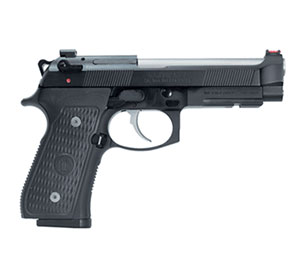
Known for intricately designed, and meticulously manufactured hunting and sporting shotguns, Beretta joined the list of “wonder nines” with the Model 92. The Beretta 92 was another DA/SA steel-framed wonder. The Walther P38 we mentioned earlier was a big influence for the original Beretta 92. The original 92 was a bit different than the 92FS we know today. It had a frame mounted safety and a heel magazine release, which was popular among European pistols. Perhaps the most notable feature of the 92 is the slide. The large cut-out on top of the slide leaves the barrel almost fully exposed. The 92 had slide cuts before slide cuts were cool. Like the CZ75, the 92 had a crisp trigger, an all-steel frame, and a 15-round capacity. The fit, finish, and overall aesthetics of the 92 made it visually appealing while its reliability and function spoke for itself. Improvements to the 92 were soon made and the Model 92S would receive the first police contract in 1977. Beretta then established Beretta U.S.A. that same year. From the late 70’s to the mid 80’s, the military held trials to replace the aging 1911 sidearm. More improvements were made to the 92S and the 92FS was born. In 1985 it was adopted by the U.S. military and earned the designation “Beretta M9.” The Beretta M9 would then be widely used by police departments across the nation. Popular with civilians alike, the M9 would see military service for the next 3 decades.
And Then There Was Glock, or, How Does It Shoot If It’s Plastic?
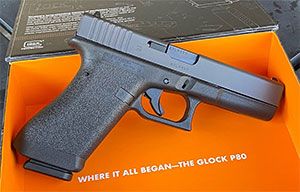
The story of the Glock pistol is a unique one to say the least. The Austrian Ministry of Defense invited manufacturers to design a new pistol, the (Pistole 80) for military use. Several notable manufacturers like: Beretta, Sig, and FN submitted prototypes along with a little-known company named Glock GmbH. The man behind Glock was Gaston Glock, a small manufacturer of curtain rods who seized upon the opportunity. Gaston Glock designed a steel-reinforced polymer injection molded frame which met the weight requirements of the trials. Glock also pioneered the “Safe Action” trigger and designed a robust but simple slide. While Glock wasn’t the first to pioneer the striker-fire mechanism, Glock was the first to implement it successfully. These design aspects, together with Glock’s mythical reliability, won the military contract and stunned the world. The commercial name for the military’s (Pistole 80) was the Glock G17, denoting the patent number. Glock branched out to several different countries and soon became the highest selling handgun ever produced. Universally trusted and used by police and militaries all over the world, its proven design still makes Glock the most carried pistol to date. Some may call it a “wonder nine” while others say Glock created a category of its own, the “polymer wonders” or “plastic fantastics.”
These high-capacity, reliable, and duty-grade handguns changed the way the world carries firearms. Whether for law enforcement, military, or civilian use, the “wonder-nines” revolutionized the firearms industry and paved the way for all the amazing and innovative pistol options we have today. Thanks to forward-thinking designers and engineers, a concealable handgun with a 17 round capacity and almost zero chance of a malfunction is no longer just a dream.













